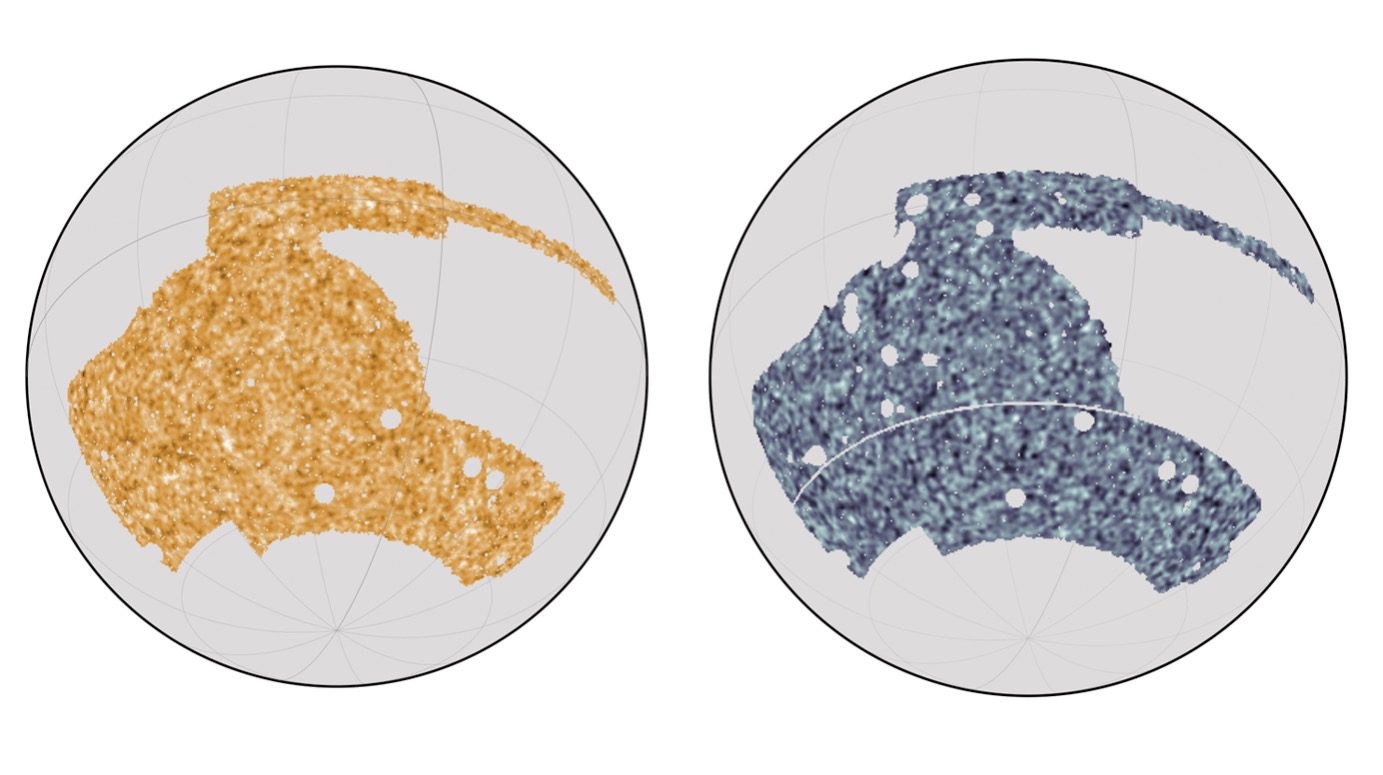Scientists have published the most accurate map of the distribution of matter in the Universe. This incredible achievement gives insights into the evolution of the cosmos as a whole and it suggests that the Standard Model of Cosmology is missing some ingredients to explain what we are seeing today.
The matter that makes stars, planets, humans, and capybaras is just 5 percent of the matter-energy content of the universe. According to our best understanding, 25 percent is made by an invisible substance we call dark matter. The remaining 70 percent is dark energy, which is responsible for the accelerated expansion of the universe.
We have no direct measurement of dark matter or dark energy. What we know about them comes from the study of galaxies near and (mostly) far and by the measurements from the cosmic microwave background, the first light that moved freely in the universe 380,000 years after the Big Bang.
This latest work employed those two focuses too. The Dark Energy Survey measured galaxies’ properties to work out the expansion rate of the Universe over cosmic history, and the South Pole Telescope measured the cosmic microwave background. Both datasets were used to measure gravitational lensing. Matter, both regular and dark, warps spacetime creating lensing effects. So by measuring the lensing, you can work out where the matter is. And using the two different instruments you get a more precise map.
“It functions like a cross-check, so it becomes a much more robust measurement than if you just used one or the other,” one of the lead authors Chihway Chang, from the University of Chicago, said in a statement.
These two maps of the sky by the Dark Energy Survey (left) and the South Pole Telescope (right) were combined to make the most precise matter distribution map yet. Image Credit: Yuuki Omori
The analysis was then compared to the Standard Model of cosmology, which incorporates the accepted physical laws and the presumed values of dark matter, dark energy, and regular matter. The model can be used to create simulations that show how the universe has evolved from 13.8 billion years ago to today. And those simulations look slightly different from the observations.
“It seems like there are slightly less fluctuations in the current universe, than we would predict assuming our standard cosmological model anchored to the early universe,” said analysis coauthor and University of Hawaii astrophysicist Eric Baxter.
The work suggests that the matter in the universe is less clumpy: it just does not cluster as much as the theory predicts. This is not the only problem with the model. A tension has emerged with the expansion rate of the universe in recent years.
“I think this exercise showed both the challenges and benefits of doing these kinds of analyses,” Chang said. “There’s a lot of new things you can do when you combine these different angles of looking at the universe.”
Current and future observatories are collecting more data and this incredible map will be refined again and again. Hopefully, an answer about the properties of dark matter (and dark energy) will emerge from this kind of work.
The findings were published in three articles in the journal Physical Review D.
Source Link: Most Accurate Map Of All The Matter In The Universe Revealed
